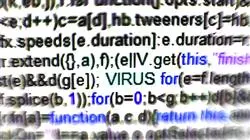University certificate
Scientific endorser

The world's largest faculty of information technology”
Introduction to the Program
With this 100% online Postgraduate diploma, you will acquire advanced skills to identify, prevent and mitigate cyber attacks using innovative tools such as ChatGPT”

Cybersecurity has emerged as one of today's top global priorities. From the protection of personal data to the security of critical infrastructures, such as financial systems and energy networks, this field has become an essential pillar to ensure stability and trust in the digital world. Moreover, with the irruption of Artificial Intelligence, traditional defense strategies have been transformed, allowing an evolution towards more predictive and automated protection systems. In this sense, intelligent systems not only strengthen threat detection capabilities, but also enable proactive and adaptive responses that minimize risks.
With this in mind, TECH presents a comprehensive Postgraduate diploma in Cybersecurity Threat Analysis and Detection with Artificial Intelligence, through which IT professionals will delve into the most relevant aspects to identify, prevent and mitigate modern cyber attacks using advanced tools such as Gemini. This university program will enable them to master predictive analysis techniques, attack simulation and intrusion detection, as well as to implement proactive defense systems optimized with Artificial Intelligence. In addition, they will acquire the necessary skills to protect Internet of Things infrastructures and manage cyber incidents in real time, consolidating them as IT security experts in a highly demanded market.
At the same time, this university program is developed under a 100% online modality, allowing professionals to combine their learning with their work and personal responsibilities. The academic resources of this university program, such as explanatory videos, interactive summaries and infographics, are available 24 hours a day, 7 days a week, from any device with an Internet connection. In addition, this academic itinerary is based on the innovative Relearning method, which optimizes the assimilation of key concepts through strategic reiteration, guaranteeing dynamic and effective learning.
You will implement intrusion detection systems based on Artificial Intelligence, optimizing the protection of critical infrastructures”
The Postgraduate diploma in Cybersecurity Threat Detection and Analysis with Artificial Intelligence contains the most complete and up-to-date program on the market. The most important features include:
- The development of case studies presented by experts with deep knowledge in Cybersecurity and Artificial Intelligence, who apply these tools for the detection, prevention and mitigation of cyber threats in advanced technological environments
- The graphic, schematic and eminently practical content of the book provides scientific and practical information on those disciplines that are essential for professional practice
- Practical exercises where the process of self-assessment can be used to improve learning
- Its special emphasis on innovative methodologies
- Theoretical lessons, questions to the expert, debate forums on controversial topics, and individual reflection assignments
- Content that is accessible from any fixed or portable device with an Internet connection
You will have access to explanatory videos, interactive summaries and infographics, 24 hours a day, from any device and without interfering with your personal responsibilities”
The program’s teaching staff includes professionals from the field who contribute their work experience to this educational program, as well as renowned specialists from leading societies and prestigious universities.
The multimedia content, developed with the latest educational technology, will provide the professional with situated and contextual learning, i.e., a simulated environment that will provide immersive education programmed to learn in real situations.
This program is designed around Problem-Based Learning, whereby the professional must try to solve the different professional practice situations that arise during the course. For this purpose, students will be assisted by an innovative interactive video system created by renowned experts.
You will master Machine Learning algorithms to anticipate and neutralize computer crimes"

You will optimize risk detection and analysis processes in digital environments, positioning yourself as a strategic expert in Cyber Defense"
Why study at TECH?
TECH is the world’s largest online university. With an impressive catalog of more than 14,000 university programs available in 11 languages, it is positioned as a leader in employability, with a 99% job placement rate. In addition, it relies on an enormous faculty of more than 6,000 professors of the highest international renown.

Study at the world's largest online university and guarantee your professional success. The future starts at TECH”
The world’s best online university according to FORBES
The prestigious Forbes magazine, specialized in business and finance, has highlighted TECH as “the world's best online university” This is what they have recently stated in an article in their digital edition in which they echo the success story of this institution, “thanks to the academic offer it provides, the selection of its teaching staff, and an innovative learning method aimed at educating the professionals of the future”
A revolutionary study method, a cutting-edge faculty and a practical focus: the key to TECH's success.
The most complete study plans on the university scene
TECH offers the most complete study plans on the university scene, with syllabuses that cover fundamental concepts and, at the same time, the main scientific advances in their specific scientific areas. In addition, these programs are continuously being updated to guarantee students the academic vanguard and the most in-demand professional skills. In this way, the university's qualifications provide its graduates with a significant advantage to propel their careers to success.
TECH offers the most comprehensive and intensive study plans on the current university scene.
A world-class teaching staff
TECH's teaching staff is made up of more than 6,000 professors with the highest international recognition. Professors, researchers and top executives of multinational companies, including Isaiah Covington, performance coach of the Boston Celtics; Magda Romanska, principal investigator at Harvard MetaLAB; Ignacio Wistumba, chairman of the department of translational molecular pathology at MD Anderson Cancer Center; and D.W. Pine, creative director of TIME magazine, among others.
Internationally renowned experts, specialized in different branches of Health, Technology, Communication and Business, form part of the TECH faculty.
A unique learning method
TECH is the first university to use Relearning in all its programs. It is the best online learning methodology, accredited with international teaching quality certifications, provided by prestigious educational agencies. In addition, this disruptive educational model is complemented with the “Case Method”, thereby setting up a unique online teaching strategy. Innovative teaching resources are also implemented, including detailed videos, infographics and interactive summaries.
TECH combines Relearning and the Case Method in all its university programs to guarantee excellent theoretical and practical learning, studying whenever and wherever you want.
The world's largest online university
TECH is the world’s largest online university. We are the largest educational institution, with the best and widest online educational catalog, one hundred percent online and covering the vast majority of areas of knowledge. We offer a large selection of our own degrees and accredited online undergraduate and postgraduate degrees. In total, more than 14,000 university degrees, in eleven different languages, make us the largest educational largest in the world.
TECH has the world's most extensive catalog of academic and official programs, available in more than 11 languages.
Google Premier Partner
The American technology giant has awarded TECH the Google Google Premier Partner badge. This award, which is only available to 3% of the world's companies, highlights the efficient, flexible and tailored experience that this university provides to students. The recognition as a Google Premier Partner not only accredits the maximum rigor, performance and investment in TECH's digital infrastructures, but also places this university as one of the world's leading technology companies.
Google has positioned TECH in the top 3% of the world's most important technology companies by awarding it its Google Premier Partner badge.
The official online university of the NBA
TECH is the official online university of the NBA. Thanks to our agreement with the biggest league in basketball, we offer our students exclusive university programs, as well as a wide variety of educational resources focused on the business of the league and other areas of the sports industry. Each program is made up of a uniquely designed syllabus and features exceptional guest hosts: professionals with a distinguished sports background who will offer their expertise on the most relevant topics.
TECH has been selected by the NBA, the world's top basketball league, as its official online university.
The top-rated university by its students
Students have positioned TECH as the world's top-rated university on the main review websites, with a highest rating of 4.9 out of 5, obtained from more than 1,000 reviews. These results consolidate TECH as the benchmark university institution at an international level, reflecting the excellence and positive impact of its educational model.” reflecting the excellence and positive impact of its educational model.”
TECH is the world’s top-rated university by its students.
Leaders in employability
TECH has managed to become the leading university in employability. 99% of its students obtain jobs in the academic field they have studied, within one year of completing any of the university's programs. A similar number achieve immediate career enhancement. All this thanks to a study methodology that bases its effectiveness on the acquisition of practical skills, which are absolutely necessary for professional development.
99% of TECH graduates find a job within a year of completing their studies.
Postgraduate Diploma in Cybersecurity Threat Detection and Analysis with Artificial Intelligence
In an increasingly digitized world, security threats are evolving rapidly, putting critical data, networks and systems at risk. In this context, Artificial Intelligence has positioned itself as an essential tool to anticipate, identify and mitigate these risks efficiently. Under this premise, TECH presents this Postgraduate Diploma in Analysis and Detection of Security Threats with Artificial Intelligence. A 100% online program that will provide professionals with the necessary skills to apply advanced algorithms and machine learning techniques in the protection of digital environments. Accordingly, key areas such as the development of predictive models to identify anomalous behavior, digital forensics using AI and automated strategies to manage cybersecurity incidents will be explored during the training.
Master AI tools for threat detection
The incorporation of Artificial Intelligence in cybersecurity has transformed the way in which companies and organizations face current challenges. Therefore, in this Postgraduate Diploma, specialists will learn to use innovative tools that optimize detection and response to threats. In this sense, the program will address relevant topics such as the design of monitoring systems based on AI, the use of neural networks to analyze large volumes of data and the implementation of real-time security solutions. In addition, it will delve into the study of machine learning applications in malware detection, vulnerability analysis and the development of proactive strategies to prevent cyber-attacks. Thanks to these approaches, graduates will excel in a high-demand field, guaranteeing access to new opportunities in the technology industry. In short, TECH, the largest online university in the world according to Forbes, represents the best academic option in the market.







